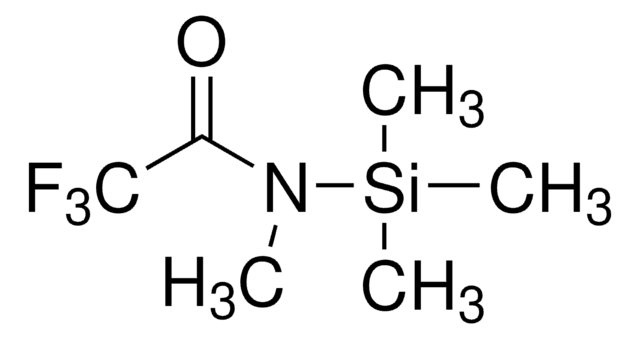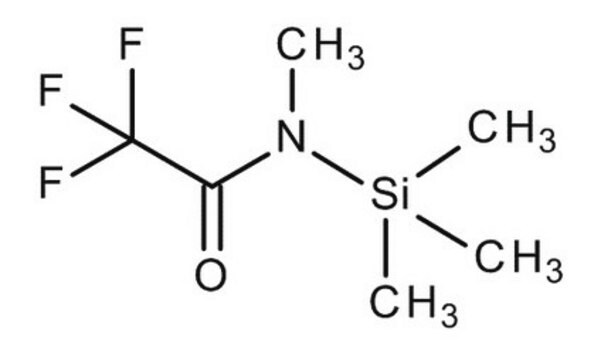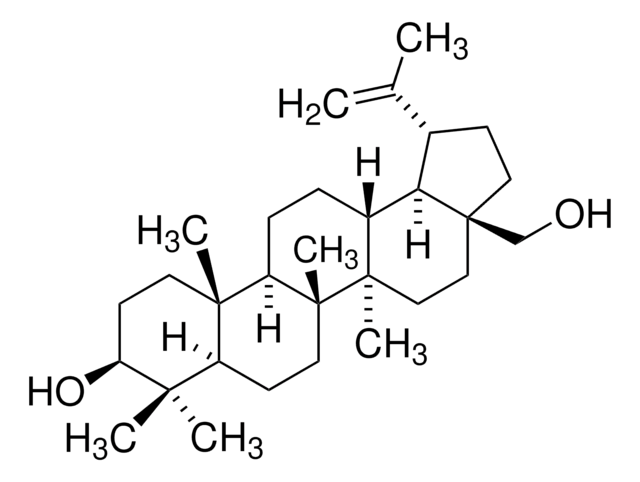69479
N-Methyl-N-(trimethylsilyl)trifluoroacetamide
for GC derivatization, LiChropur™, ≥98.5%
Synonym(s):
N-Trimethylsilyl-N-methyl trifluoroacetamide, MSTFA
About This Item
Recommended Products
grade
for GC derivatization
Quality Level
vapor density
>1 (vs air)
vapor pressure
8.8 mmHg ( 27 °C)
Assay
≥98.5% (GC)
≥98.5%
form
liquid
quality
LiChropur™
reaction suitability
reagent type: derivatization reagent
reaction type: Silylations
technique(s)
gas chromatography (GC): suitable
refractive index
n20/D 1.38 (lit.)
n20/D 1.380
bp
130-132 °C (lit.)
density
1.075 g/mL at 25 °C (lit.)
storage temp.
2-8°C
SMILES string
CN(C(=O)C(F)(F)F)[Si](C)(C)C
InChI
1S/C6H12F3NOSi/c1-10(12(2,3)4)5(11)6(7,8)9/h1-4H3
InChI key
MSPCIZMDDUQPGJ-UHFFFAOYSA-N
Looking for similar products? Visit Product Comparison Guide
Related Categories
General description
Application
Other Notes
Legal Information
related product
Signal Word
Warning
Hazard Statements
Precautionary Statements
Hazard Classifications
Eye Irrit. 2 - Flam. Liq. 3 - Skin Irrit. 2 - STOT SE 3
Target Organs
Respiratory system
Storage Class Code
3 - Flammable liquids
WGK
WGK 3
Flash Point(F)
77.0 °F - closed cup
Flash Point(C)
25 °C - closed cup
Personal Protective Equipment
Choose from one of the most recent versions:
Already Own This Product?
Find documentation for the products that you have recently purchased in the Document Library.
Customers Also Viewed
Articles
Results of a study involving the ability few Fluka silylating reagents to form GC-MS-compatible trimethylsilylmethyl derivatives of NSAIDs
Protocols
Example displays how MSTFA/MSTFA-d9 derivatization of amphetamine provides valuable information in mass spectra and chromatograms using SLB-5ms GC column.
Our team of scientists has experience in all areas of research including Life Science, Material Science, Chemical Synthesis, Chromatography, Analytical and many others.
Contact Technical Service







